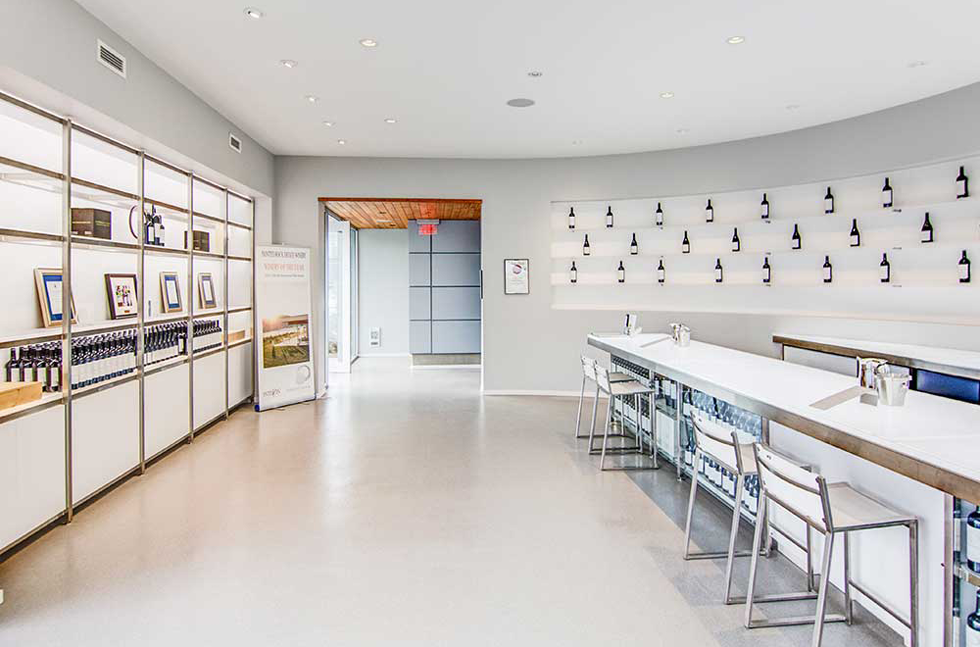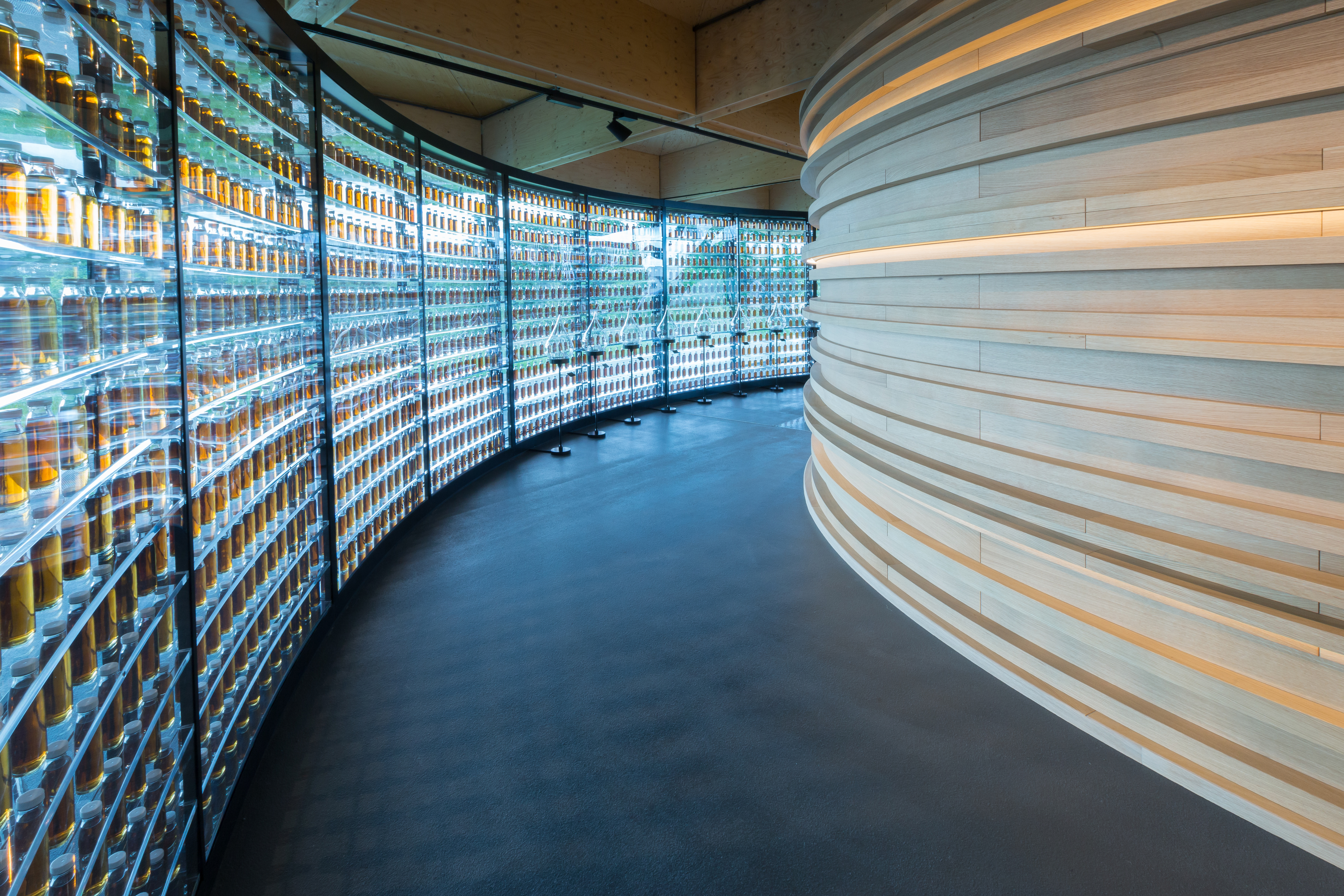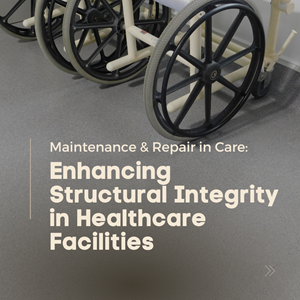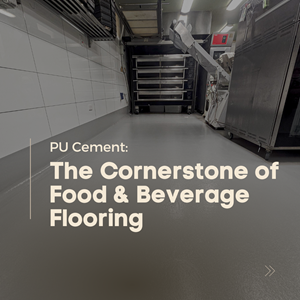When most people hear “MMA,” they think of mixed martial arts—but in the world of flooring, MMA stands for methyl methacrylate, a high-performance resin that’s transforming industrial and commercial spaces. Known for its rapid curing time, versatility, and durability, MMA flooring is gaining traction as an ideal solution for businesses seeking minimal downtime and long-lasting performance.
This guide explores the advantages, challenges, and key industry insights surrounding MMA flooring, helping decision-makers choose the right solution for their environments—whether a busy supermarket, a food production facility, or a warehouse in need of refurbishment.
The advantages of MMA Flooring
Rapid Installation and Cure Times
A defining feature of MMA flooring is its exceptional speed. MMA systems typically achieve full chemical and physical cure within one to two hours from completion of the system installation — allowing spaces to return to full operational use far sooner than other resin systems. This makes MMA particularly valuable for remediation and refurbishment projects where extended shutdowns aren’t feasible.
MMA can be installed in a broad temperature range, from -30°C upwards, making it ideal for cold storage facilities, freezers, or unheated construction sites where traditional resin systems would struggle to cure.
Unlike some labour-intensive trowel-applied systems, MMA can be roller-applied, covering large areas quickly with a seamless, smooth finish that avoids trowel marks and joints.
Durable, Versatile, and Seamless
MMA flooring offers high durability against mechanical wear, heavy traffic, chemical exposure, and thermal extremes. Its seamless, non-porous finish prevents the buildup of bacteria and dirt, making it especially suited to food production, healthcare, and hygiene-sensitive environments. MMA flooring systems offer high UV stability preventing yellowing or brittleness over time, even in sun-exposed areas.
MMA is equally effective across diverse sectors—from retail and hospitality to chemical plants and manufacturing, offering the strength to handle forklifts and pallet jacks without sacrificing aesthetics.
Customisable Aesthetics
MMA systems aren’t just functional—they’re also flexible in design and can be quite beautiful. Available in a range of colours, textures, and finishes, MMA flooring can incorporate decorative aggregates such as coloured quartz or metallic flakes to create bespoke looks. Custom patterns or brand-aligned colour schemes are possible, supporting both design and durability goals.

Slip, Chemical, and Stain Resistance
MMA can be tailored for varying slip resistance needs. By incorporating non-slip aggregates into the resin system, contractors can achieve textured, anti-slip finishes ideal for commercial kitchens, loading docks, or high foot-traffic areas requiring compliance with Australian Standard 4586-2013 for pedestrian surface materials.
The material’s resistance to chemicals, oils, fats, acids, alkalis and salts, makes it a go-to for environments prone to spillages. Unlike some coatings, MMA resists staining and discolouration over time—even under harsh cleaning regimens.
Waterproof
MMA resin systems can be delivered to be compliant with Australian Standard 4654.1-2012 for waterproofing membranes in external, above-ground applications, ensuring the asset is appropriately protected with the incorporation of a class 3 waterproof membrane within the system.
Easy Refurbishment
A seamless MMA floor only requires routine maintenance like many other resin flooring solutions. When the floor eventually reaches the end of its lifecycle, refurbishment is remarkably straightforward. New MMA layers chemically bond to the floor's existing MMA coating without the need for complete removal or any mechanical abrasion, creating a monolithic system without delamination risk. This allows for fast, cost-effective repairs with minimal surface prep—significantly reducing lifecycle costs compared to the full removal and replacement required for many epoxy or polyurethane systems.
The Challenges of MMA Flooring
Odours During Installation
One commonly cited challenge of MMA is the odour released during curing. While non-toxic and very low in VOC content, the smell can be noticeable and potentially disruptive in occupied spaces.
However, this challenge is manageable. Contractors can implement ventilation controls such as temporary extraction fans, negative air pressure setups, or performing installations outside of business hours to minimize impact. Once cured, the odour dissipates completely, leaving an inert, odourless surface.
Higher Initial Costs
MMA flooring can carry a higher upfront cost than standard epoxy or polyurethane coatings. However, this is often offset by its faster return to service, lower downtime costs, and longer lifecycle savings. In time-sensitive or critical environments, the operational savings from rapid turnaround often outweigh the initial investment.
Specialised Installation Required
Due to its rapid curing and chemical properties, MMA must be installed by trained, experienced applicators. Contractors unfamiliar with the material risk poor adhesion or curing issues. Selecting qualified installers is crucial for achieving MMA’s performance potential.
How Does MMA Compare to Other Resin Systems?
Compared to epoxy, polyurethane & polyaspartic flooring, MMA stands out in:

Industry Insights: Trends and Innovations
Growth in Refurbishment & Remediation
With facilities increasingly under pressure to maintain operations while upgrading, MMA’s rapid cure is positioning it as a flooring of choice in live-site remediation projects, especially in commercial and industrial sectors.
Sustainability & Odour Innovations
Manufacturers are developing lower-odour and ultra-low VOC MMA formulations to align with tightening environmental standards. Combined with MMA’s long lifespan and easy refurbishment (reducing waste), the system is becoming a more sustainable option over its lifecycle.
Emerging Hybrid Systems
Some innovations combine MMA with other resin technologies to balance speed, odour, and aesthetics. Expect further development in hybrid or additive-enhanced MMA systems aimed at broader architectural applications.
Conclusion
Methyl methacrylate flooring delivers a compelling mix of speed, strength, durability, and versatility, making it an excellent solution for commercial and industrial spaces needing fast turnaround and long-term reliability. While installation requires careful planning around odour and skilled labour, these considerations are manageable—and often outweighed by MMA’s unique advantages.
Understanding MMA’s role alongside other resin technologies empowers decision-makers to choose the right flooring for their needs—whether refurbishing a hospital ward over a weekend or installing a chemical-resistant warehouse floor while operations continue uninterrupted.
Need help selecting the right flooring? Contact our team for tailored, project-specific advice.
 Flooring, Concrete & Masonry
Maintenance & Repair in Care: Enhancing Structural Integrity in Healthcare Facilities
Flooring, Concrete & Masonry
Maintenance & Repair in Care: Enhancing Structural Integrity in Healthcare Facilities
In this blog, we look at ways to ensure optimum structural integrity of a healthcare facility...
 Flooring
PU Cement: The Cornerstone of Food & Beverage Flooring
Flooring
PU Cement: The Cornerstone of Food & Beverage Flooring
In this blog, we look at Polyurethane cement floor coatings, also known as PU Cement, Poly-cement or PU Concrete...

© 2025 Tremco Incorporated

